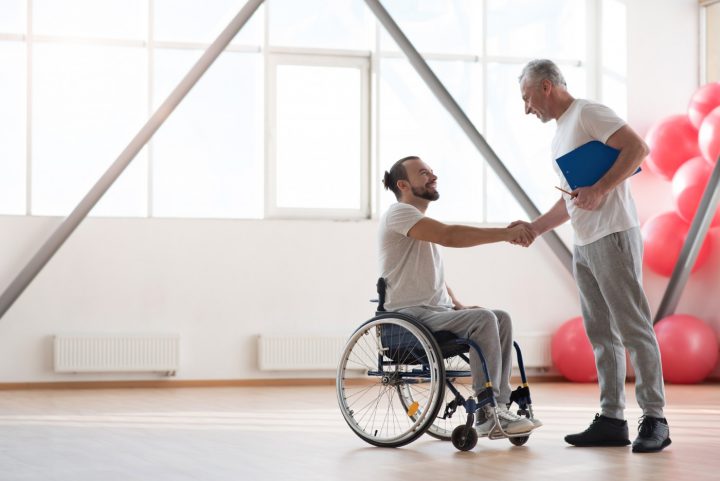Nice to Meet You! Greeting Someone with a Disability

Have you ever seen a person with a wheelchair rolling toward you and wondered how you should react? You’re likely not the only one. Here are a few pointers for the next time you find yourself in this situation:
Make eye contact
You don’t need to stare, but make a point of looking us in the eye. I know meeting our gaze might seem uncomfortable, but it’s a simple act that says more than you realize.
While the sight of me and my wheelchair often draws stares, it also sometimes results in people turning their backs to me. It’s possible that this is to prevent staring and is meant to be respectful, but it feels cold and hurtful. It leaves me to wonder why they turned away. I’m sure these people don’t intend to bruise my feelings. They may not even realize that’s what they’ve done.
One of my favorite things to see while I’m out and about is a warm pair of eyes smiling at me. This tells me that a person not only sees me, but also acknowledges me. The reassurance warms my heart.
Introduce yourself
There are several ways to introduce yourself when meeting someone. One of the most common is shaking hands. While not everyone with a disability is able to shake your hand, there are many who can, even if it doesn’t look that way at first glance.
Want to learn more about Spinal Muscular Atrophy? Ask your questions in our SMA forums.
Many people have reached for my hand and pulled away when they noticed my bent wrist hovering in front of my body. I understand their hesitation. It probably looks like it’s too difficult for me to shake someone’s hand, and I’m sure they want to avoid hurting me.
But every once in a while, I’ll meet a person who will reach across the space between us and gently take my hand in theirs. This is a gesture I never fail to notice. Those people tend to leave a lasting impression.
Not everyone likes handshakes, so it might be more comfortable to try a soft pat on the arm or a friendly wave. If you do want to shake someone’s hand but worry about hurting them, simply ask if it’s OK. No matter the method, your greeting will not be overlooked.
Start a conversation
Just say hello! A cheerful greeting is always appreciated. Introduce yourself and see where the conversation leads.
Discuss the weather, news, families, pets, hobbies — anything you think of in the moment. As with most conversations, there’s a good chance you’ll stumble upon a common interest before long. People with disabilities enjoy the same things as our able-bodied peers, and we will gladly chat with you about them.
I am a social butterfly, so meeting new people comes naturally to me. I thrive on social interaction. It leaves me energized and excited for our next conversation. I know not everyone is like this, but I look forward to it.
Simply smile
Those are great ways to begin an interaction, but I saved one of the best — and easiest — for last. An encounter with nearly anyone can be made brighter by smiling. Smiles are a universal language. Plus, as the orphan Annie always says, “You’re never fully dressed without a smile!”
The next time you see a disabled person coming your way, try putting a few of these tips into action. And remember, most of us only want to be treated the same way that you do.
***
Note: SMA News Today is strictly a news and information website about the disease. It does not provide medical advice, diagnosis, or treatment. This content is not intended to be a substitute for professional medical advice, diagnosis, or treatment. Always seek the advice of your physician or other qualified health provider with any questions you may have regarding a medical condition. Never disregard professional medical advice or delay in seeking it because of something you have read on this website. The opinions expressed in this column are not those of SMA News Today, or its parent company, Bionews Services, and are intended to spark discussion about issues pertaining to spinal muscular atrophy.








Leave a comment
Fill in the required fields to post. Your email address will not be published.